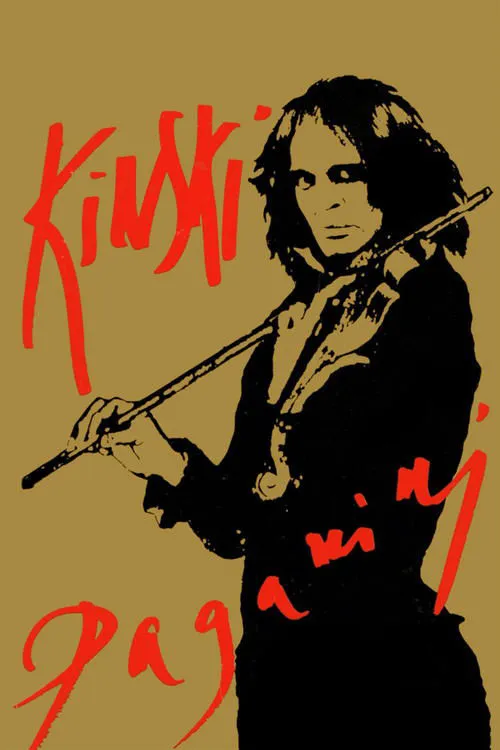Paganini

Plot
In the early 19th century, the musical world was abuzz with the name Niccolo Paganini, the Italian violinist who captivated audiences with his unparalleled technical skills and mesmerizing performances. Dubbed the "devil violinist," Paganini's music seemed to possess a magic that set him apart from his peers. His fame spread far and wide, captivating even the high society of Europe, and he soon became the talk of the town in every capital city. As Paganini's reputation grew, so did the mystique around his character. People whispered about his supposed pact with the devil, making outrageous claims that he made a Faustian bargain to acquire his extraordinary abilities. The rumors may have been exaggerated, but they added to the myth surrounding Paganini, transforming him into a legendary figure. Women fainted at his feet, and men fought duels over the honor of being in his presence. One such devotee of Paganini was the young and ambitious violinist Jean de Satigny. A French aristocrat with a promising career as a violinist, Jean became increasingly obsessed with Paganini, seeing him as the epitome of everything he aspired to achieve. He traveled across Europe, attending Paganini's performances whenever he could, pouring over his music and studying his every move. Paganini, for his part, remained aloof and detached, preferring to focus on his art rather than the cult of personality that had grown up around him. He was a man consumed by his music, often leaving his audiences in awe with his technical wizardry. His compositions, particularly his Caprices for Solo Violin, showcased a level of virtuosity that even the most skilled musicians couldn't hope to match. Despite his fame, Paganini's personal life was marked by tragedy. His sister Teresa, who had been his only confidante and closest friend, had died suddenly, leaving him heartbroken. His obsession with music became all-consuming, as he poured his grief into his music, channeling it into some of the most sublime and expressive compositions the world had ever known. Meanwhile, a dark and sinister figure was lurking in the shadows, waiting to strike. The wealthy and powerful Baron Stampiglia, a self-made man with a ruthless ambition to match Paganini's musical genius, saw the violinist as a threat to his own fortunes. He had a network of spies and informers keeping tabs on Paganini's every move, waiting for the perfect moment to strike and expose the composer's secrets. As the years went by, Paganini continued to captivate audiences with his music, but at a personal cost. His life was one of loneliness and isolation, with only his violin for company. His addiction to the spotlight grew, and with it, his reliance on stimulants to cope with the pressures of his fame. In a climactic confrontation, Paganini found himself face to face with the treacherous Baron Stampiglia, who would stop at nothing to bring the violinist down. As the truth about Paganini's life begins to unravel, the devil violinist must confront his own demons and the destructive power of his art. In the midst of this turmoil, Jean de Satigny finds himself drawn into Paganini's orbit, torn between his admiration for the violinist's genius and his own growing disillusionment with the price he has to pay for fame. Through the lens of Paganini's tragic story, the film exposes the dark underbelly of the artistic world, where success comes at the expense of one's personal relationships and even one's own humanity. In the end, it is not the music that saves Paganini but the love of his art. Despite the turmoil surrounding him, he finds solace in the world of his imagination, where the boundaries between reality and fantasy blur. It is in this world of sound and music that the devil violinist ultimately finds redemption, his legacy cemented as one of the greatest musical geniuses of all time.
Reviews
Recommendations




